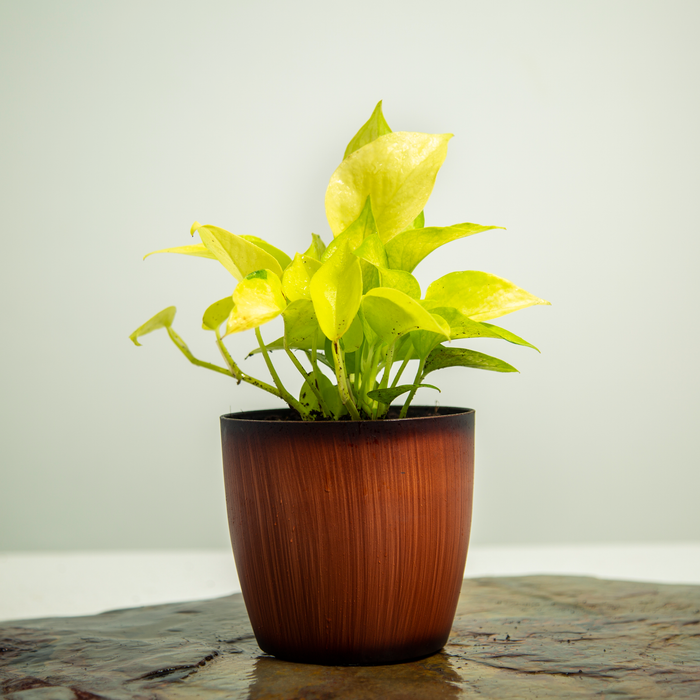
Money plant neon
Common Name: Neon Pothos, Lime Pothos
Botanical Name: Asia and Australia
Other names: Money plant Neon
Origin: Asia and Australia
What's special?
‘Money plant neon’ is an urban legend. Since it is from the family of money plants, it has all the similar durable characteristics but with its distinctive bright green neon color. The stem of this plant, with its beautiful heart-shaped leaves, can be supported by ropes or wires to fill up the empty space as per your requirement. As this climbing shrub is a fast-growing, it can quickly turn into a dense structure which will not just give a tropical feel but will also help to purify indoor air. Doesn’t matter whether your indoor environment is bright or dull, this easy to care trailing plant will brighten up any given space with its beautiful neon display.
Growth Habits: Money plants at home can easily grow up to 10 - 15 ft. long
Soil Requirement: Loamy well drained soil with cocopeat
Watering Schedule: Twice a week
Light condition: Bright indirect sunlight or partial shade
Ideal Temperature: Anywhere between 15 - 32 degree Celsius
Repotting instructions: Do not repot the plant for a minimum of 2 weeks after receiving it. Once you see the plant growing well, you can repot it in a slightly larger container.
Suitable Locations: Try to keep this plant at indoor locations like Office desk, bedroom, Balcony, windowsill, or wherever it can get some sunlight and support for its long steams.
Maintenance: Low
Caring Tips:
• This plant grows extremely fast, and branches can spread to any directions. You will need to trim this plant regularly if you have to control its growth. • Too much heat can damage the leaves of this plant. So, try to keep it at a place where it can receive indirect sunlight. • As a simple rule, watering must be done regularly in the summer and should be reduced during winter and rainy season. • Keep a track of dead, infected or damaged plant parts. Discard them whenever required. • You can tie the stems or use ropes or wires to support the growth of the plant.



